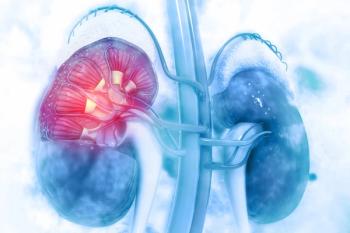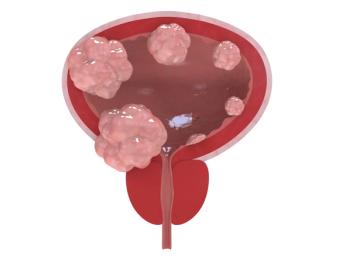
Cabozantinib Improves Survival in Patients With Previously Treated RCC
Compared to everolimus, the oral tyrosine kinase inhibitor cabozantinib improves objective tumor response, delays disease progression, and prolongs overall survival time among patients with RCC.
Compared to everolimus (Afinitor), the oral tyrosine kinase inhibitor cabozantinib (Cabometyx) improves objective tumor response, delays disease progression, and prolongs overall survival (OS) time among patients with advanced clear cell renal cell carcinoma (RCC), according to final results from the randomized phase III METEOR trial (
“The observed clinical activity of cabozantinib was applicable to patients in all risk categories and irrespective of previous treatments and the extent of tumor burden,” the coauthors noted. “Based on these results, cabozantinib should be considered a new treatment option for previously treated patients with advanced renal cell carcinoma.”
The mTOR inhibitor everolimus is a current second-line standard of care for advanced RCC. Cabozantinib targets MET, VEGFR, and AXL. The METEOR trial was undertaken to compare the efficacy and safety of cabozantinib versus everolimus. The new report presents final OS outcomes.
During 2013 and 2014, the research team enrolled 658 adult patients with advanced or metastatic clear cell RCC who had previously undergone TKI therapy targeting the vascular endothelial growth factor receptor (VEGFR), and randomly assigned them to receive cabozantinib (60 mg once daily; n=330) or everolimus (10 mg once daily; n=328).
At a median follow-up of 18.7 months, cabozantinib was associated with superior OS (21.4 months vs 16.5 months; hazard ratio [HR], 0.66; 95% CI, 0.53-0.83; P = .00026).
Progression-free survival (PFS) was also better among patients in the cabozantinib study group (HR, 0.51; 95% CI, 0.41-0.62; P < .0001). Objective response was 17% in the cabozantinib group vs 3% in the everolimus group (P < .0001).
Serious adverse events (grade 3+) occurred in 39% of patients taking cabozantinib and 40% of patients taking everolimus. Common grade 3/4 adverse events included hypertension (15% in the cabozantinib group vs 4% in the everolimus group); diarrhea (13% vs 2%); fatigue (11% vs 7%), and palmar-plantar erythrodysesthesia syndrome (8% vs 1%); anemia (6% vs 17%). There were three treatment-related deaths in the study: one in the cabozantinib group (not otherwise specified) and two in the everolimus group (one aspergillus infection death and one pneumonia-aspiration death).
“Patients should be monitored for adverse events that might require dose modifications” with cabozantinib, the authors cautioned.
Newsletter
Stay up to date on recent advances in the multidisciplinary approach to cancer.
















































































